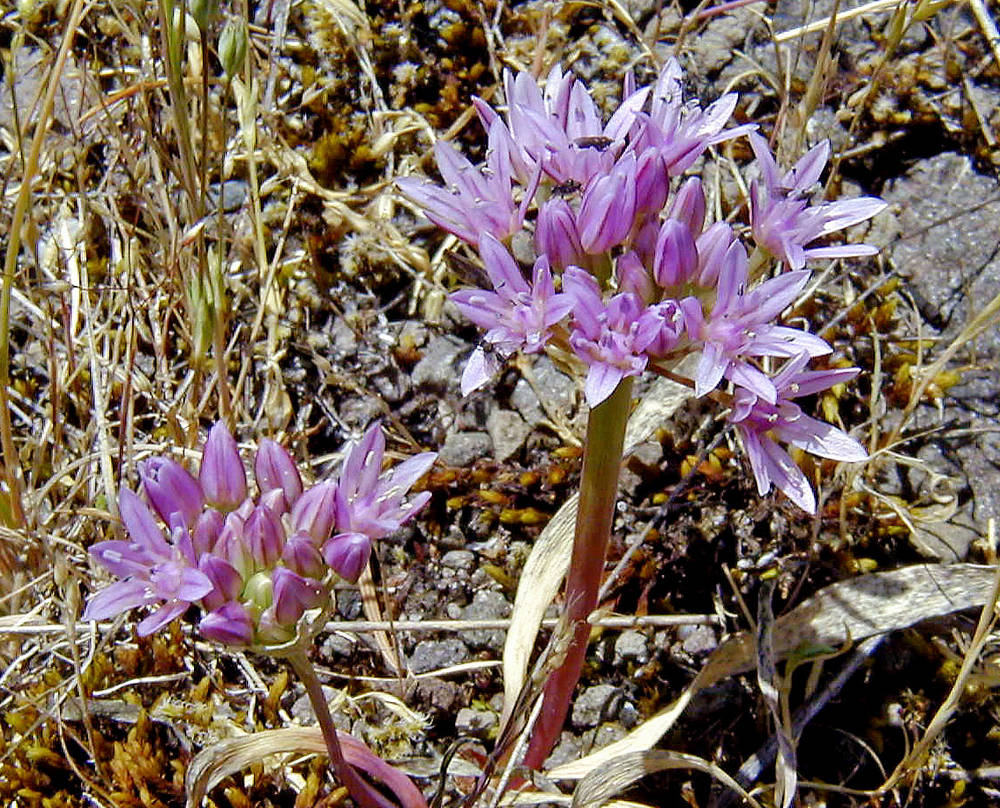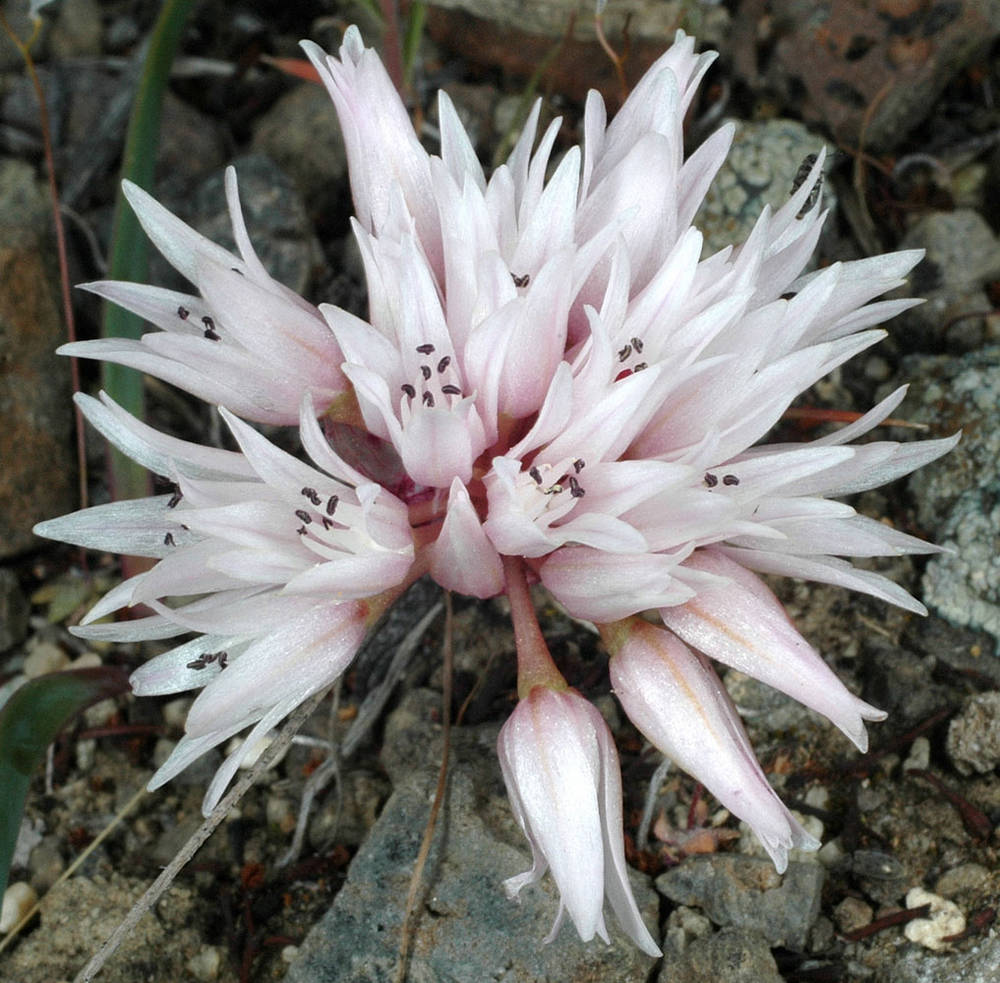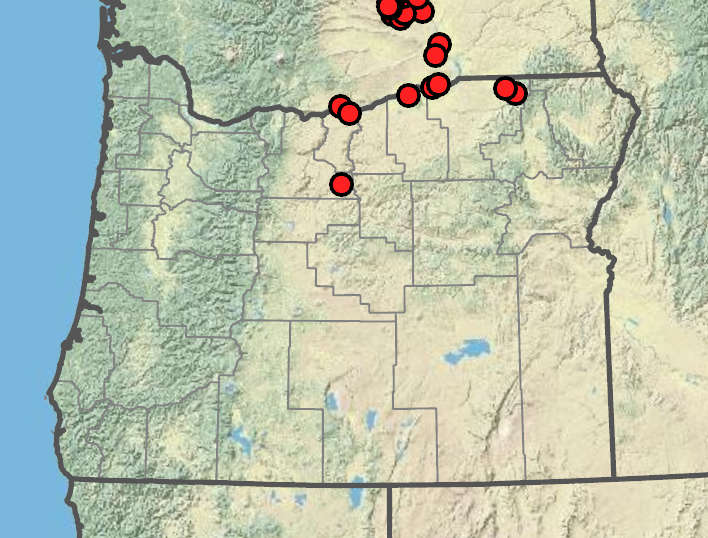Allium crenulatum
Allium robinsonii
Olympic onion, scalloped onion
Robinson's onion
1–6+, replaced annually with new bulbs borne terminally on short; secondary rhizomes, parent bulb disappearing by anthesis except for still-functional roots and shriveled bulb coat, oblique-ovoid;
outer coats not or only partially enclosing bulbs, membranous, lacking cellular reticulation or cells arranged in only 2–3 rows adjacent to roots; more or less quadrate; without fibers.
1–3+; renewal bulbs formed within coats of parent bulb; increase bulbs absent or 1–2; more or less equaling parent bulbs, never appearing as basal cluster; ovoid;
outer coats membranous, lacking cellular reticulation or cells arranged in only 2–3 rows adjacent to roots; more or less quadrate; without fibers.
usually deciduous with scape, withering from tip at anthesis; (1)2;
blades solid; flat, falcate, 10–33 cm × 1.5–10 mm.
usually deciduous with scape, 2;
blades solid; flat, strongly falcate, 5–18 cm × 1–3(4) mm.
usually forming abscission layer and deciduous with leaves after seeds mature; solitary; more or less erect; solid, flattened, winged distally;
wings frequently crenulate proximal to umbel, 5–15 cm × 1–5 mm.
usually forming abscission layer and deciduous with leaves after seeds mature; solitary; erect; solid, flattened, slightly 2-edged, 3–7 cm × 1–3 mm.
persistent; erect; compact, 10–25-flowered, conic to hemispheric;
pedicels 6–16 mm;
spathe bracts 2.
deciduous with scape; erect; compact, 5–12-flowered, hemispheric;
pedicels 3–12 mm;
spathe bracts 2.
6–12 mm;
tepals erect, lanceolate; more or less equal, white to pinkish with deeper pink, purple or greenish midveins;
margins entire;
apex acute;
stamens included;
ovary obscurely crested with 3 minute, 2-lobed processes;
stigma scarcely thickened, unlobed.
7–9 mm;
tepals erect, oblong; more or less equal, white to pale pink with red midribs;
margins entire;
apex obtuse;
stamens included;
ovary more or less distinctly crested with 3 or 6 low processes;
stigma unlobed.
=14.
=14.
Allium crenulatum
Allium robinsonii
Talus slopes and clay soils, including serpentine, on bald summits and ridges. Flowering May–Jul. 0–1400 m. BW, Casc, CR, ECas, Est, WV. WA; north to British Columbia. Native.
Oregon’s Allium crenulatum populations differ morphologically and are quite variable. It is tempting to name some of them, but so far botanists have been unable to find consistent, clear patterns, so all are treated as a single highly variable species.
Sand and gravel deposits and sandy slopes. Flowering Apr–May. 50–800 m. Col. WA. Native.
Nick Otting, Richard Brainerd, Barbara Wilson
Nick Otting, Richard Brainerd, Barbara Wilson





